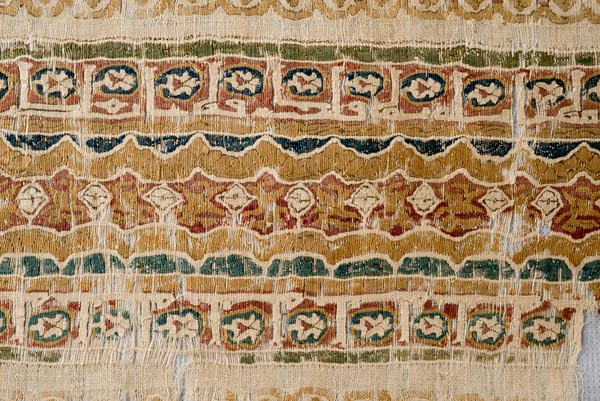Polychrome Textile
The Show

Polychrome textile with patterns and pseudo-Arabic inscriptions Probably 12th–13th centuries, Fustat (medieval Cairo), Egypt Bast and silk Kelsey Museum of Archaeology, 94165
This delicate linen textile fragment is covered in rows of finely woven patterns, including a few bands of barely discernable script. Such decoration was quite time-consuming and reserved for the finest cloth. Previously stark inscribed (tiraz) textiles became more ornamental during the Fatimid and Mamluk periods (10th–15th centuries) in Egypt, as textile designers began to add rows of colorful geometric, vegetal, and animal patterns. An inscription is present in this fragment but remains almost invisible among the detailed designs. In this instance, legibility is set aside in order to emphasize the overall ornamental quality of the fabric and its rhythmic effects. While it is impossible to determine the exact use of a piece of fabric in such fragmentary condition, the weight of the cloth and the delicacy of the designs suggest that it may have been worn on the body.
Bibliography: Day 1937; Golombek 1988; Marzouk 1943; Micklewright 1991, 39; Sokoly 1997b; Blair 1989, 329; and Ettinghausen 1974, 304.
Return to the Show


